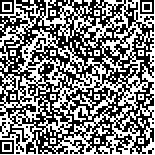下载中心
优秀审稿专家
优秀论文
相关链接
摘要

基于非相干光源叠加的原理,建立了太阳-激光双光源植被冠层方向反射模型。首先,分析了太阳光和激光的特点,指出了其协同应用对植被定量遥感探测的应用潜力;其次,利用Li-Strahler几何光学模型和辐射传输SAIL模型,进行了双光源情况下的模拟研究,发现在非相干叠加的情况下,当两种光源在不同角度入射时,会出现双热点的现象,并且其强度受到两种光源各自强度的影响。基于上述原理,分别针对两种模型进行试验研究,利用模拟“树木”进行了稀疏分布的几何光学模型研究,利用小麦进行了浓密分布条件下的辐射传输模型试验研究,试验结果表明了基本原理及模拟结果的可靠性。结合相关研究分析表明,双光源建模有利于定量遥感机理模型的求解,可以利用构造的“热点”信息进行植被结构参数提取,同时对于主被动遥感协同应用和激光的植被定量遥感研究具有重要价值。
Based on the principle of non-coherent superposition, the vegetation canopy reflectance model using both sun and laser incident sources was established. First, we analyzed the characteristics of the sun and laser, and synthesized the advantages the two types of incident light. Then, based on Li-Strahler geometric optical model and SAIL (Scattering by Arbitrarily Inclined Leaves) radiative transfer model, we performed the simulation study. It showed that when the two incident light sources emitted at different angles, two "hot spot" appeared. The intensity of the "hot spot" was affected by the intensity of both sun and laser. After the simulation, we conducted a field experiment with vegetations of "tree" and wheat. Simulated "trees" were used to verify geometrical optical model for sparse forest canopy assumptions and the wheat was selected to verify the radiative transfer model. The results showed the reliability of the basic principles and simulation of models with two incident light sources. It also demonstrated that the model with two incident light sources was helpful for estimation of vegetation structure parameters using the quantitative models. Our results would add great values to collaborative applications and laser quantitative remote sensing research.

